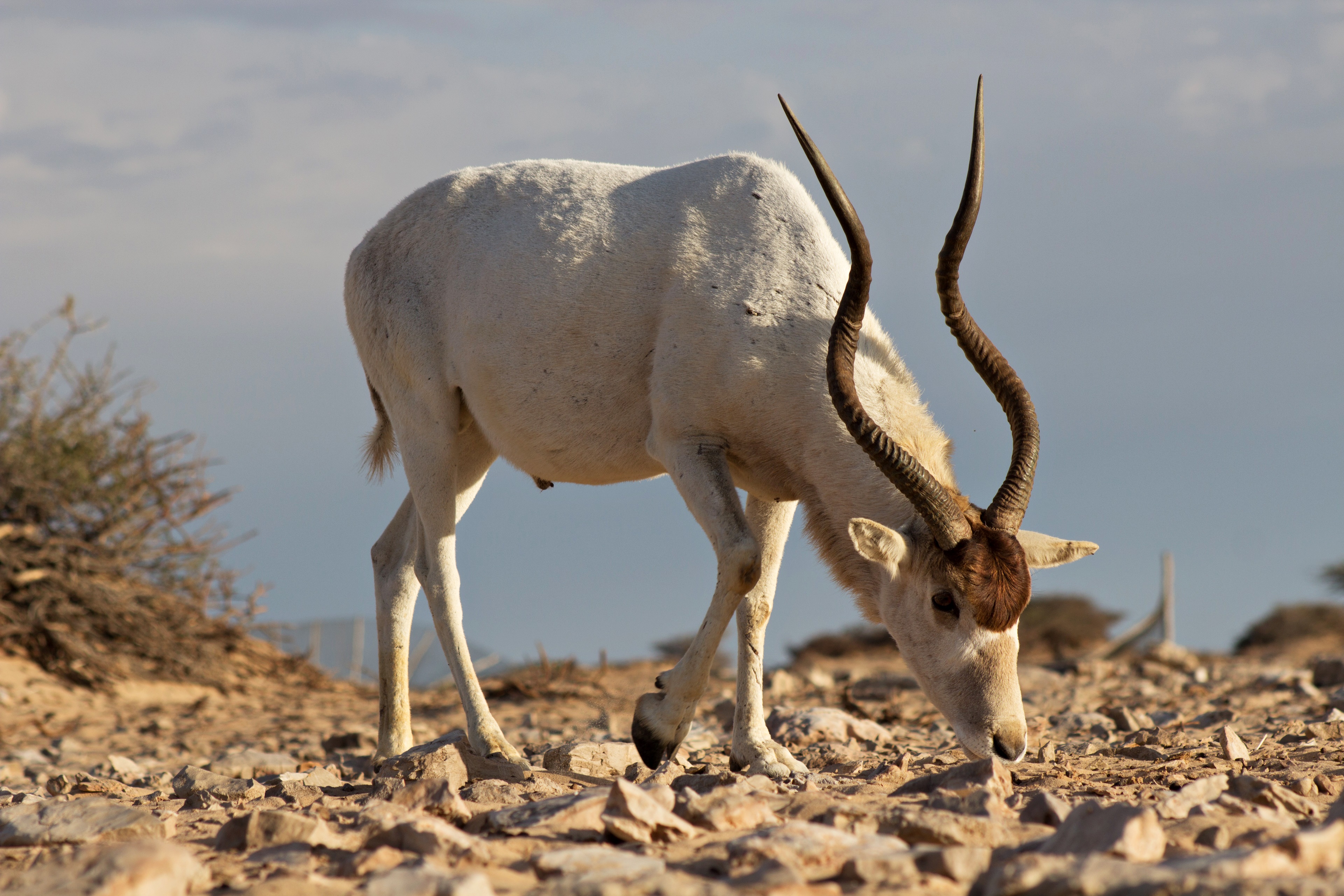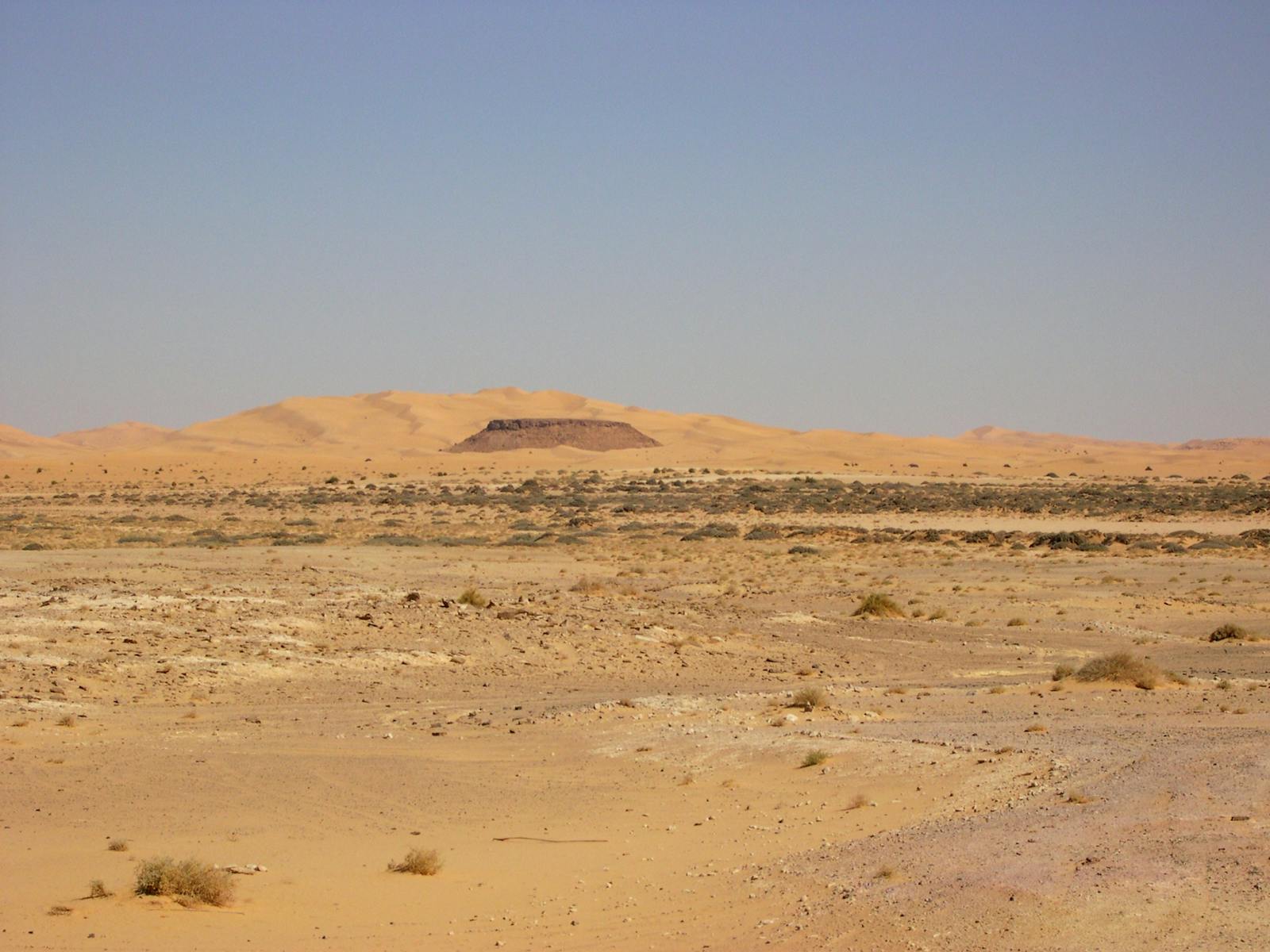West Sahara Desert
The ecoregion’s land area is provided in units of 1,000 hectares. The conservation target is the Global Safety Net (GSN1) area for the given ecoregion. The protection level indicates the percentage of the GSN goal that is currently protected on a scale of 0-10. N/A means data is not available at this time.
Bioregion: Northern Sahara Deserts, Savannas & Marshes (PA24)
Realm: Southern Eurasia
Ecoregion Size (1000 ha):
74,635
Ecoregion ID:
845
Conservation Target:
19%
Protection Level:
0
States: Algeria, Libya, Mauritania
The West Sahara Desert ecoregion is a largely barren landscape, speckled sparingly with oases and transient green spaces which only appear after rare rainfall. Despite its depauperate state, it hosts a few charismatic and endangered species including the world’s palest antelope species, the slender-horned gazelle. What little wildlife exists in this area is largely unthreatened by habitat transformation, but is under threat from hunting by local people.
.jpg)
The flagship species of the West Sahara Desert ecoregion is the fennec fox. Image credit: Keith Roper, Flickr
Heading South from the western North African coast, the Mediterranean environment gives way slowly to the barren, arid, and seemingly empty plateaus, dry valleys, and large flats of the Western Sahara Desert. The region is vastly covered in rock plateaus (hammadas), salt flats, and sand; what vegetation there is, is limited to where groundwater is sufficient to support species such as Acacia, tamarisk, and certain milkweeds that can thrive.
These areas are limited to seasonally wettened areas and oases. The limited shrubs and grasses found there are still, however, notably more diverse plant life than in the East Sahara—this is likely due to the west getting relatively more rainfall, which even so is less than 100 mm per year. Mean annual temperatures in this ecoregion are over 30°C, and whilst summer highs can reach over 50°C, nights can fall below 0°C. This extreme disparity is in part caused by a lack of vegetation to steady and buffer fluctuating temperatures between day and night.
This ecoregion is home to some antelope species, notably the rhim, or slender-horned gazelle: the species can be found in the eastern part of the ecoregion, as well as to the North. It is an endangered species, has the palest coat of the gazelles, and is highly adapted to desert life. Other antelope species exist in small numbers, though many previously-endemic species are no longer present in the region. In the past the critically threatened addax would probably have occurred in this ecoregion, but this species is likely to be extirpated.
Small numbers of scimitar-horned oryx may have also occurred in the past. The bulk of the rest of the animal diversity of this region is made up of bird species, though small mammals and arthropods can be found in parts of the region. The fennec fox, the smallest canid species in the world, has unusually large ears that are evolved to pick up their prey’s slightest movement in the vast desert. It is the national animal of Algeria.

Addax. Image credit: Creative Commons
This region is both largely unprotected and undisturbed. The low human population density means that pressures on natural resources and habitats themselves are small and unthreatening; with a population smaller than 1 million people over such a large area, there are no systematic threats from settlements and infrastructure in this area. However, the peoples of this region, who include the Tuareg, Tibbu, and Moors, survive a nomadic lifestyle by hunting wildlife in additional to pastoralism.
The most arid parts of this region contain no people at all, and the areas which are only suitable habitats in the short periods of rainfall are also vastly unaffected by humans. Due to these pressures, the large animal species that remain in this region are still under considerable hunting pressure, both for food and for recreation, though the habitats themselves are not, due to their transient nature.
Priority conservation actions for this regions are to: 1) reintroduce extirpated native antelope species to the desert to facilitate the recovery of the critically endangered addax; 2) reduce hunting pressures on remaining animal life, working with local nomadic peoples to develop alternative sustainable livelihoods; and 3) establish protected areas over parts of the regions which host mammal populations, whether permanently or transiently.
Citations
1. Richard Hoath (2009). A Field Guide to the Mammals of Egypt. American University in Cairo Press. pp. 153–154. ISBN 978-977-416-254-1
2. “Northern Africa”, Ecoregions, World Wildlife Fund, Accessed 29/04/2019, https://www.worldwildlife.org/ecoregions/pa1327
3. “Sahara desert”, Globalspecies ecoregions, Global Species, 2019, https://www.globalspecies.org/ecoregions/display/PA1327

.png?auto=compress%2Cformat&w=300)

